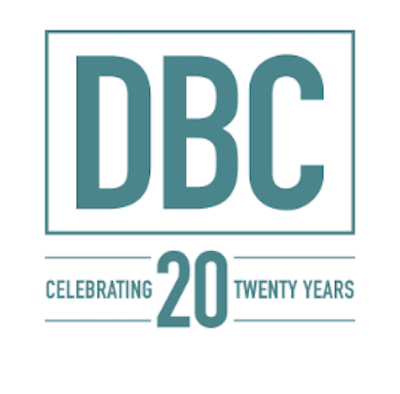 Getting someone to download your mobile app is tricky enough, but counting on them to actually use it is something else entirely. A mere month after being downloaded, only three percent of apps still had active users, according to research reported in eMarketer. Most apps aren’t even retained for a day! App marketers must find ways to engage their users without being intrusive.
Getting someone to download your mobile app is tricky enough, but counting on them to actually use it is something else entirely. A mere month after being downloaded, only three percent of apps still had active users, according to research reported in eMarketer. Most apps aren’t even retained for a day! App marketers must find ways to engage their users without being intrusive.
Here’s three steps to help marketers understand their audience segments, customize their approach accordingly and refine their outreach to drive maximum engagement.
- Put the right SDK in place
Of course, marketers’ first step is to ensure they have a good product—an easy-to-use mobile app that provides value to its users. Then, they will begin their efforts to acquire new users. From the onset, marketers should put systems in place so they have the information necessary to track, analyze and intelligently segment their audience. This will help them understand how people are using their product and inform subsequent marketing strategies, including engagement campaigns.
Just like all advertising, marketers’ success is contingent on identifying the message most likely to resonate with the recipient. For example, users who have already made an in-app purchase would respond to different content than those who have yet to spend a dime. Someone who repeatedly views products but then, without fail, abandons the shopping cart needs to be treated differently than a person who rarely opens the app. Marketers need to identify and create different user groups based on patterns and past behaviors. Then, you can determine the most strategic message and delivery mechanism for driving subsequent action.
- Test tactics for each audience segment
When marketers think of re-engagement, they sometimes limit their approach to retargeting. Although the latter is a crucial and effective strategy, marketers will get better results by trying out different methods and employing a combination of approaches customized per audience segment. Let’s take a closer look at the key tools in the app re-engagement arsenal, and how and when they’re best utilized.
Retargeting
Retargeting is a popular mobile marketing tactic for good reason. Retargeted ads have a higher click-through rate than other mobile ads and generate a better ROI. According to research from myThings, a global retargeting provider, the retargeting sales conversion rate is 13 times faster on mobile devices than it is on desktop computers. Retargeting also drives a 46% higher click-through rate on mobile than on desktop.
App marketers can use retargeting to reap similar gains. They use it to reach people who have already downloaded their apps with strategic messages to drive additional action. The ad content depends on the audience segment and the behavior the marketer is trying to inspire. For example, advertisers can target people who abandoned their cart before making a purchase with a customized reminder to complete their transaction.
Retargeting helps apps stay top-of-mind, even when users are in other apps or on the mobile web, promote premium features and drive subsequent action. For best results, advertisers must remember the constraints of the mobile medium as they craft their ads and use frequency capping to avoid annoying the user and wasting ad spend.
Push Notifications
About 40% to 60% of users activate push notifications, depending on the industry, yet not all marketers take proper advantage of the communication strategy.
Push notifications are a great tool for delivering timely messages, but advertisers must be cognizant of the personal nature of the mobile device. They are interrupting a person’s day-to-day, which is, inarguably, intrusive. For the tactic to work, they must share something of value and practice restraint to avoid spamming users. They should also employ a degree of common sense and empathy and think of the best time of day for their message. When possible, customize push notifications based on user preferences and allow people to opt-in or out to certain updates. For example, a travel app can deliver true value for its users by sending real-time price alerts about destinations that matter to their users.
It may not be sexy, but email is still one of the most popular and cost-efficient marketing techniques. Because a greater number of people are checking and engaging with email on their mobile devices, it has become an increasingly valuable tool for app-marketers. The same principles apply: Marketers must use common sense and creativity and prioritize the needs and preferences of their users to drive email KPIs, and in turn, engagement with their apps. For example, since research shows that people tend to check email in the morning, a flash sales app could send a morning email to users personalized with the brands they have previously engaged with on the app.
With ad blocking on the rise, it’s important to experiment. None of these methods alone is enough to reach your audience, and, unfortunately, there is no simple answer to the question: “What works best?” Marketers need to take a holistic view and measure their efforts for each audience segment.
- Refine the strategy
As marketers deploy different tactics for different audience profiles, they need to measure their results closely and stay nimble. They will drive the best results by testing messages and methods and refining their strategy based on data. KPIs vary depending on the industry and the app’s features, but commonly include such metrics as retention rate, clicks, time spent on app, searches and purchases. As they analyze their campaign performance, app marketers should consider:
- The way they have segmented users: Could grouping people in a different way drive better results?
- The message: Are they saying the right thing?
- The way the message is delivered: Could changing something as subtle as a word choice or an image make a difference?
- The tactic: Is email the right way to reach this audience? Could retargeting or push notifications work better?
- The timing: How does changing the day, or the time of day, impact results?
Marketers should adjust their approach based on performance. For example, if their email open rate is dismal, try a different tactic. If people are browsing items but not making purchases, try a different promotional message. Advertisers will drive the best results by being adaptable and relying on data to make conclusions.
For many apps, the bulk of revenue comes from a limited number of highly engaged users. With time and analysis, and by taking a personalized approach and respecting the intimate nature of the mobile device, advertisers can launch more effective and predictable campaigns and better understand how much they should be spending on engagement as opposed to user acquisition.
The better app marketers are at analyzing their performance and making subsequent changes, the better the results. It is more than trial and error—it is intelligent experimentation.
Stefan Benndorf is COO & managing director of AppLift.
.



